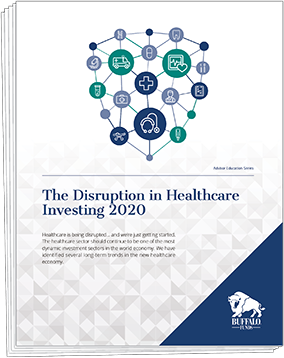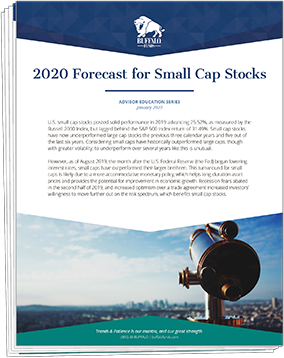5 Tips for a Successful Financial Advisor Podcast
5 Tips for a Successful Financial Advisor Podcast
Reaching current and potential clients is dependent on finding the right method to catch their attention. As financial advisors continue to ensure they’re engaging with clients safely through digital mediums like social media and video conferencing, podcasts are another great way to showcase your expertise and share important insights in investment strategies and challenges. But with approximately 850,000 podcasts — and counting — available to listeners, it can be hard to stand out. For advisors looking to launch their own podcasts, here are a few simple tips to ensure each episode is planned and executed effectively.
Ensure Compliance
First, check with your company to confirm that producing a podcast adheres to corporate policies and current regulations. There are a number of guidelines, including those from SEC and FINRA, that must be abided by to ensure content is not presented in a misleading way. Keeping open communication with your firm and your compliance team about the topics you’ll be covering is your first step in developing a podcast successfully without risk of non-compliance.
Find Your Target Listener — and your voice
Consider the fact that there will be an estimated 117.8 million people in the U.S. who will listen to a podcast on a regular, monthly basis this year — a roughly 10% year-over-year increase. There is incredible potential to capture some of those listeners and build your audience. But who exactly is your target audience? Will you be speaking primarily to other professionals and thus free to use more technical terms? If you’re giving advice to new investors, the language should be simpler and the basic concepts outlined at a slower pace. When you know your audience ahead of time, you can write in a way that speaks to their differing interests and levels of investing experience.
Understanding your audience is just part of the strategy to build an effective podcast. You will also want to establish your own personality and brand. Are you naturally funny and light-hearted or do you approach topics you care about passionately? Make a point of jotting down a few key words that represent who you are and what persona you want to present on your podcast. This persona may evolve, but there should always be an overall identity to guide you from episode to episode. When you wander too far from your established voice, it can be confusing for listeners who expect a certain personality when they tune into your podcast.
Be Consistent
This brings us to our third tip to successful podcasting: be consistent. This is crucial when planning the actual content of the podcast and that strategy begins with choosing the format of the show. How will you discuss your topics on each episode? Will it be a solo “monologue” style podcast? This format is a tried-and-true approach, allowing the host to workshop and curate the message carefully. Panel discussions can produce lively, dynamic shows if well-moderated. Interview podcasts can garner attention with prestigious guests, but it can be challenging to book relevant and interesting guests week to week.
Whichever format you choose, if you are to maintain a regular schedule of episodes at a high level of polish — an absolute must to retain and grow your audience — you cannot scramble to write an episode every week. Ideally, try banking your content and have a few episodes planned out ahead at all times. Outline your first four topics and with every point you wish to make, list a few supporting points for easy reference. Depending on your format, you could write out a full script for each, or just use the outlines as guides for impromptu discussion.
If you’re wondering where the basis for your show’s content comes from, look no further than your experience as a financial advisor. Bring your expertise in understanding your clients and their needs by highlighting the issues that you’ve found are the most pressing for them right now. Many excellent techniques exist for finding topics, but a simple brainstorming list is a good place to start. Develop ideas in any order you like with nothing off-limits, and then organize the ideas into different categories and prioritize from simplest to most advanced. At this stage, aim for as long a list as possible so you can cut ideas and still have plenty to choose from. Part of the joy in listening to podcasts is the ritual and the comfort in their regularity, and your success as a podcaster will hinge on providing a consistent release schedule that can be supported by planning your content in advance.
Invest in the Right Equipment
One of the most important steps in creating a podcast is to use the right equipment. When the only thing that is connecting you with your audience is the sound of your voice, production value is key. Investing in a high quality microphone and editing software can be the difference from a mediocre listening experience to an enjoyable one that reflects your professionalism. If your budget allows for it, consider acoustic paneling for your walls as well. There’s no reason to overspend and buy the most expensive equipment and accessories on the market, but putting money towards the best items you can afford to support the production quality of your show will go a long way in building listeners’ confidence and trust in you.
Spread the Word and Publish
With your content planned and the equipment ready, you’ll also want to consider how you will market your podcast. Your current clients should be the first to know, and they can be encouraged to share your podcast with their inner circles. Make sure to announce the podcast and instructions on how to find it in all of your upcoming client communications and spread the word through your social media channels.
While carefully preparing to debut your show, research available podcast hosting services to know where and how to publish your work. Be sure that all of the major podcasting apps, like Spotify and Apple Podcasts, also carry your show once you’ve uploaded it to your chosen hosting platform. If you’ve properly planned your topics and you can boast consistent quality in content and production values, you’ll already be a cut above the crowd. By implementing a thoughtful strategy at the very beginning stages of your podcast project, you’ll be more likely to find a system that works for you. This will help you expand your position as a financial services thought leader and manage this valuable method of connecting with current and prospective clients on a long-term basis.
Christopher Crawford is the Director of Advisor Relationships for the Buffalo Funds. He has 10 years of experience in the financial services industry, previously holding positions at Invesco, IMA Financial Group, and Arthur J. Gallagher. At the Buffalo Funds, Christopher works with investment consultant relations, key account management, institutional distribution and client service. His main goal is to partner with advisors to bring business building ideas and provide unparalleled customer support to their business, always striving to make it easy and reliable to work with the entire Buffalo Funds investment team. Christopher received an M.B.A. from Washington University in St. Louis and a B.S.F.A. from Southern Methodist University. He also holds licenses for the Series 7, Series 63, and Series 65.
 |
Christopher Crawford |


